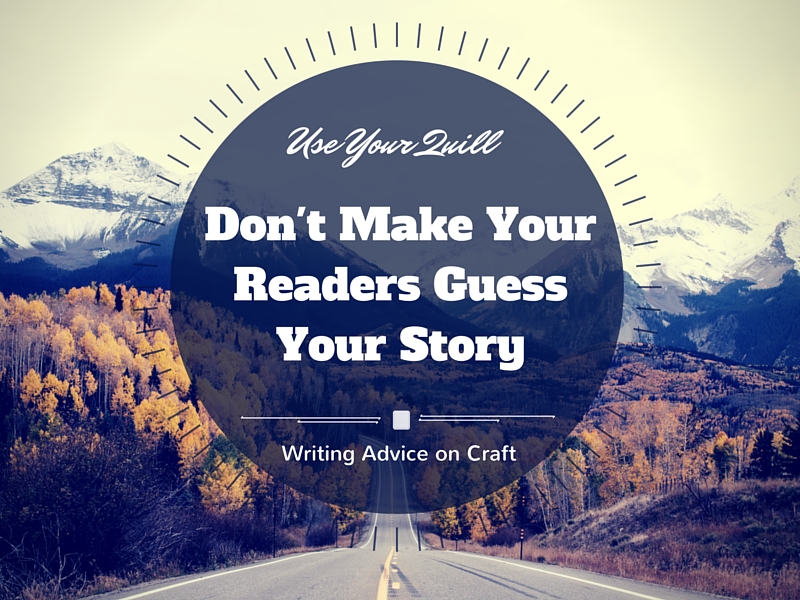By Laura Nsafou
Turning the first page of a new manuscript is exciting. When it comes to meeting new characters, it’s all about discovery. When writers submit their manuscripts, agents experience their stories’ impact like a first-time reader.
We want to find the best stories to represent so as we read, we ask ourselves questions to help us find them. Is the plot realistic? Is it inventive? Is the journey too fast or too long? Do the characters draw us in? At Quill Shift Literary Agency, it is through answering these questions that we are able to examine a writer’s work and see their potential. Unfortunately, many writers stop us from getting these answers for the sake of…suspense.
A good story must have a balanced rhythm. There needs to be slow moments to get to know characters and their environment, but there must also be moments of action. Suspense is the subtle ingredient between them. As a reader, I accept partial information about the plot because of suspense. Yet, the suspense isn’t only about waiting. It’s about dropping clues that will help readers understand and appreciate the story. Sadly, some writers forget to give these clues and just keep the reader waiting, which turns them off from the story.
Suspense is not about genre, it’s a writing tool.
Thriller, romance, science fiction…no matter what genre you choose for your story, suspense plays a part. We frequently read manuscripts where writers use suspense by withholding nearly all the information so as to keep the reader guessing. As readers, we like mystery in a story but, if we are kept in the dark for too long, we move on to the next book. There is nothing more frustrating than a novel that takes more time to understand than to read.
Suspense isn’t about letting readers guess what happens next. How can they guess what the author doesn’t say?
Suspense is a tool. It tells your readers to expect more. Whether it’s about increasing fear or mystery, it’s an emotional crescendo in your plot. It’s necessary, but must be regulated. Too much suspense will kill your reader’s interest.
The question remains for the writer: how should one efficiently incorporate suspense into a story? In his article 6 Secrets to Creating and Sustaining Suspense, Steve James explains the first thing every author should do.
Keep every promise you make. (…) The bigger the promise, the bigger the payoff. For example, in my first novel I had the killer tell a woman whom he’d abducted, “Your death will be remembered for decades.” That’s a huge promise to readers. I’d better fulfill it by making her death memorable or terrifying. (…) A huge promise without the fulfillment isn’t suspense—it’s disappointment.
Writers should view keeping promises as a writing exercise. There must be a coherence between what is announced at the beginning of the book and what happens at the end. There is nothing worse for a reader than to be lead to expect a certain conclusion only to have the author change his mind.
There is a fine line between keeping your reader happy and revealing too much of your story. There must be subtlety in your work, as Steve James explains:
Every word in your story is a promise to the reader about the significance of that word to the story as a whole. This is where so many authors—both of suspense novels and of fiction in other genres—fumble the ball. If you spend three paragraphs describing a woman’s crimson-colored sweater, that sweater better be vital to the story. If not, you’re telling readers, “Oh, by the way, I wasted your time. Yeah, that part really wasn’t important to the story.”
Wordy descriptions do not equal suspense. Avoiding useless descriptions and predictable moments will make the book worth the reader’s time.
How can you improve the suspense in your story?
Writing a novel is about communication. What does your reader need to know? What information does he need? When should this information be revealed in the story? If the author reveals too much of the plot early on, he’ll lose readers’ interest but if he waits too long to hook the readers in, they’ll move on. Timing is important and, as Simon Woods explains in his article 9 Tricks to Writing Suspense Fiction, it can also build suspense.
The protagonist should be working against the clock, and the clock should be working for the bad guys. (…) Every minute you shortchange the protagonist is another notch up on the burner under the reader’s seat.
These time constraints mark the rhythm of your novel and the progression of a character’s journey. A climax in the plot must deliver answers and emotions to your readers’ expectations. It’s a practical trick to ensure action in the story and to check the level of suspense in your story every step of the way.
On a narrative level, timing markers will build tension. As Joe Bunting specifies in his post 7 Steps to Creating Suspense, building tension is about engaging the readers. It’s about playing with their attention without losing it.
If you pose the dramatic question too early, the audience won’t care about your cast enough to care about the dramatic question. If you pose it too late, your readers will get bored and set your book down.
Most people I read say the right time to pose the dramatic question is between 1/6 and 1/3 of the way into your story.
Bunting’s point of view highlights the interactivity you need to make suspense work. The reader has to be the reason for your timing plan. As we said before, your novel should invite your reader to discover his imagination. It’s up to you to guide.
Don’t write for yourself.
Being the only one who reads your story is tricky. It can lead you to draw from a familiar story in which you know every detail. You won’t include certain details about events because the correlation is obvious to you, the creator. The reader needs to be included and considered in your novel. Descriptions of environment, characters, and atmosphere won’t remove all the mystery.
As we saw in an earlier post, feedback is the best way to learn what isn’t obvious to readers. Circulate your story among people who are as unfamiliar with your novel as someone plucking it off the shelf for the first time. With the help of outside perspectives, you’ll learn what is useful for you to include and what loses your readers’ attention.
What writing tricks do you use to incorporate suspense in your work?






0 Comments